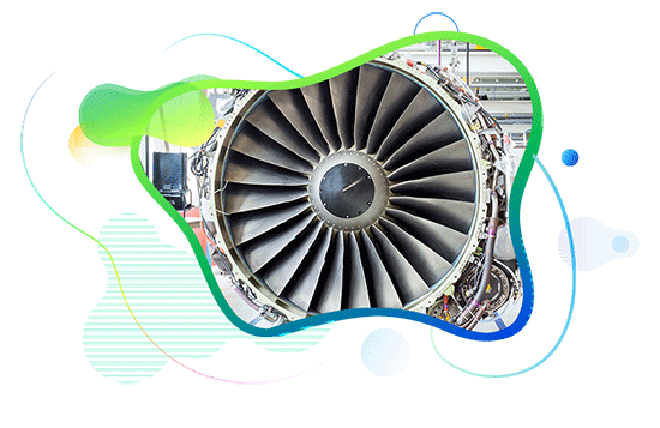

Business in Aviation
Aircraft availability and dispatch reliability are two vital signs of any airline operation. They are the most important resources to track the reliability of an aircraft. A standard reliability window is a departure from the gate within 15 minutes of schedule, excluding non-aircraft issues such as air traffic delays, bad weather, connection delays due to waiting on transferring passengers etc... Scheduled airlines track and update dispatch reliability data continuously.
Is your Aircraft Reliable?
Major and large airlines achieve their dispatch reliability between 95 - 98%, with most reliable carriers achieving 99 - 99.5% Dispatch Reliability. On time departure and arrival make for happy customers. The airlines are very cautious about the flight operation schedule and they review it on a daily basis, cancelled airline flight means increased costs and the possibility of a hit to the revenues. All airlines are focusing on Dispatch Reliability more than Aircraft Availability.
Reliability Management
Reliability Management in an organization is to provide alerts on time and help identify the potential problems existing in the aircraft, engine, or accessories, thus enabling them to take preventive measures expeditiously. It would ensure that the aircraft maintenance programs are effective and their periodicity is adequate. The program is event driven and allows for the early detection and correction of problems before they become a potential threat and safety issue. Reliability Program is a vital part of an Approved Maintenance Program. Spec 2000 is the standardized forum of an OEM for collecting, exchanging and developing an electronic data for Reliability
Data collection in terms of event based data capturing records contains
- Aircraft Hours & Landing Record
- Aircraft Event Record
- LRU Removal Record
- Shop Findings Record
- Piece Part Record
- Aircraft Log book Record
- Scheduled Maintenance Record
- Service Bulletin /Modification Record
- Aircraft Status Changes Record
The developed metric relationship between Aircraft Reliability, Component Reliability and Aircraft Productivity helps in understanding the root cause of delays and large downtimes resulting from the delay. Finally both offer reliable and cheaper service.
The Analysis
The major steps involved in Reliability Analysis are:
1. Data Collection - The aircrafts are maintained in continuous state of airworthiness by means of Scheduled and Unscheduled maintenance. The Reliability team gathers the information from both scheduled and unscheduled maintenance from the below mentioned sources –
- Pilot Reports
- In-Flight Engine Performance Data
- Functional Checks
- Bench Checks
- Shop Findings
2. Data Analysis - Data Analysis is the process of evaluating technical performance data to identify the need for a Maintenance Program Change / Maintenance Practices Change / Hardware change etc... The first step of analysis is comparing the existing system. The main objective of data analysis is to recognize the need for corrective action, establish what corrective action is to be taken and determine the effectiveness of that action.
3. Corrective Action - Corrective Action is to be taken based on the results from the data analysis and it should be implemented within a stipulated time period. Maintenance activities of all components get monitored during this stage.
4. Performance Standard – It is performance measurement in terms of Reports, Defect, Incident Rate, Event Monitoring etc... Alert values are usually based on the accepted statistical method value, making it as the base line for the periodical Monitoring.
5. Data Display & Report – Maintenance Reliability reports are developed on a monthly basis as graphical displays covering the operating experience of the previous month. It includes
- Delays / Defects including repeat defects
- Incidents including repeat incidents
- AOG / cancellation
- Trend analysis on current reliability issues
- Details of corrective actions taken or planned
- 6. Maintenance Interval and Process Change - A major characteristic in ensuring reliability is escalating maintenance interval without prior information to the Regulatory Authority. This doesn’t prevent the airline from implementing the action, but mandates the airline to include it in the Maintenance Program. Program Revision includes revision history and it should contain the Procedures Relation / Performance Standard, Data collection System, Data Analysis methods and application to the total Maintenance Program
- Specific highlights and related events
Reliability Information System
Reliability Management in aviation defines how to maintain an aircraft in a reliable condition and be beneficial to customer, operator, or OEM. Here at Ramco, the reliability management system is embedded into our latest versions of Aviation Suite as well as capable of processing data from other similar systems if deployed independently. It is designed to evaluate and monitor the effectiveness of maintenance activities and to control, analyze and improve aircraft, power plant, systems and component reliability. It is Spec 2000 enabled; which ensures seamless data exchange between operator and other stake holders. With an advanced reliability engine that is integrated with the in-house developed analysis tool, Ramco’s Reliability Management can help airlines to achieve the ultimate goal of 100% Dispatch Reliability.
Frequently Asked Questions (FAQs)
Enterprise asset management (EAM) involves the management of mission critical assets of an organization throughout each asset's lifecycle. EAM is used to plan, optimize, execute, and track the needed maintenance activities with the associated priorities, skills, materials, tools, and information. The aim is to optimize the quality and utilization of assets throughout their lifecycle, increase productive uptime and reduce operational costs.
Enterprise asset management (EAM) involves the management of the maintenance of physical assets of an organization throughout each asset's lifecycle. EAM is used to plan, optimize, execute, and track the needed maintenance activities with the associated priorities, skills, materials, tools, and information.
The software helps in effective maintenance of assets through preventive, predictive, shutdown and breakdown maintenance strategies. The system also helps enterprises mitigate equipment risks by enhanced safety standards. The streamlined operations and improved asset performance helps organizations increase their investment effectiveness.
EAM is important because it helps organizations track, assess, manage and optimize asset quality and reliability. Asset intensive Organizations have hundreds, thousands, even millions of assets which needs to be maintained to maximize / optimize life of these assets to increase the return on investment.
The key features of effective EAM are:
- Work management.
- Maintenance Strategies (Preventive/ Predictive / Breakdown / Shutdown).
- Planning and scheduling.
- Supply chain management.
- Health and safety.
- Mobility.
- Analytics.
- Improved Asset Health at reduced cost through data driven maintenance Programs
- Complete visibilityon entire maintenance data across Equipment, across Models, across Branches to aid in analysis & decision making such as to Repair or Replace the Equipment
- Insightful analysis of Inspection Data to improve customer satisfaction
- Effective maintenance management enhanced by predictive maintenance and inbuilt analytics
- Increased reliability and safety, keeps complete track of all the inspections & calibration schedules
- Mobile Application enables users to execute work while “in the field” leading to minimized non-productive time and increased productivity and reduces duplication of work and human errors in recording information.
- Quick turnaround time through Actionable Notification & Alerts for every process in real time and accessible anytime and anywhere.
- Improved Regulatory Part of asset management involves the implementation of better O&M practices, which can significantly improve compliance.
Asset Intensive companies under the following Industries :
- Ports
- Cement and Mining
- Utilities
- Fleet Maintenance
- Equipment Rental
- Other Manufacturing
- Real Estate & Infrastructure
- Power Generation
Contact us for a meeting and schedule a demo
This differs on case to case basis, based on the type of installation and unique industry specific requirements. Contact us for a meeting and schedule a demo.
This differs on case to case basis, based on the type of installation and unique industry specific requirements. Contact us for a meeting and schedule a demo.
Stay Connected, follow us on LinkedIn / Twitter to know more about EAM Software latest trends.

